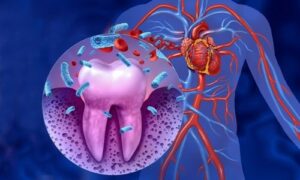What is tongue thrust?
Tongue thrusting is the habit of pushing the tongue forward between the upper and lower front teeth when swallowing. The proper position for the tip of the tongue is to push against the gum above the back of the upper front teeth, rather than between the upper and lower teeth. Dentists are concerned with the effects of tongue thrusting as they may result in a malocclusion or misalignment of the teeth. Tongue thrusting is a very treatable condition, but it involves the insight of dentists, physicians and speech specialists to ensure the condition is treated well. When identified early, this guidance will prove beneficial to the patient and lead to a lifetime of good oral health.
What are some signs of having a tongue thrust problem?
• Frequent open-mouth resting posture with the lips parted and/or the tongue resting against the upper and/or lower teeth
• Lips that is often cracked, chapped, and sore from frequent licking
• Frequent mouth breathing in the absence of allergies or nasal congestion
• The tongue is visible between the teeth. The tip of the tongue sticks out between the teeth, whether the child is resting, swallowing, or speaking.
• Mouth breathing.
• Inability to close the lips completely. This could be due to a structural abnormality or habit.
• Open bite. An open bite occurs when the front teeth don’t meet when the teeth are closed.
• Slow, fast, or messy eating.
• Speech impediment. Lisping of s and z sounds is common.
How is tongue thrust diagnosed?
A number of different healthcare professionals can diagnose tongue thrust, including:
• general practitioners
• pediatricians
• speech language pathologists
• dentists
• orthodontists
• Your or your child’s doctor may observe the way you speak and swallow.
Some practitioners may evaluate swallowing patterns by holding down the bottom lip to watch how you or your child swallows. Specifically, your doctor will want to see where the tongue is placed when swallowing.
How is tongue thrust treated?
Treatment for tongue thrust tends to be similar between children and adults.
One exception is the placement of an orthodontic device known as a “tongue crib” in the roof of a child’s mouth. In some cases, adults receive orthodontic treatment as well.
Sometimes the recommended treatment is an ongoing therapy that corrects the placement of the lips, jaw, and tongue. This therapy addresses swallowing habits, too. In addition to swallowing therapy, you or your child might require speech therapy to correct any impediments that may have developed as a result of tongue thrusting.












